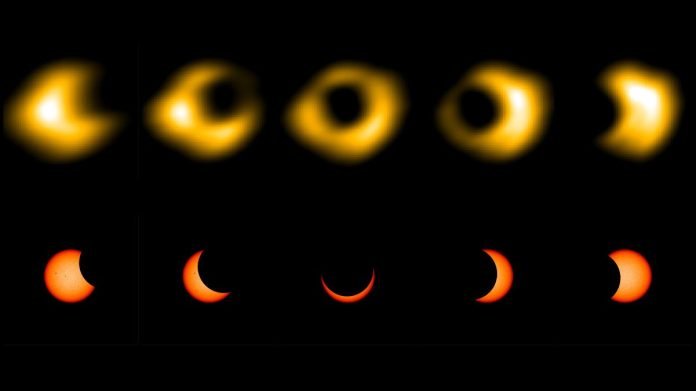
On October 14, as most Californians were treated to a partial solar eclipse (see bottom right “visible” image showing the sun’s crescent peeking out from behind the moon), researchers at the Owens Valley Radio Observatory (OVRO) took in a different view.
Using OVRO’s Long Wavelength Array (OVRO-LWA), they measured radio wavelengths between 20 and 88 megahertz (MHz) to create an image of the “radio eclipse.”
In the images and video below, the dotted lines show the moon’s location and the solid lines show the visible sun’s limb. Distortions in the video are caused by the sun’s ionosphere.
The radio waves extending beyond the sun’s edge are emitted from its corona, creating a “ring of fire” effect observable even outside the path of the full annular eclipse.
“Science-wise, this is a unique opportunity to study the sun’s extended corona with the highest resolution possible at these wavelengths, taking advantage of the moon’s limb as a moving ‘knife edge’ to increase the effective angular resolution,” says Bin Chen, a solar astrophysicist and associate professor at the New Jersey Institute of Technology, who co-leads OVRO-LWA’s research on the sun.
The OVRO-LWA completed a major upgrade this year, funded by the National Science Foundation. The telescope can now survey the sky faster than any other radio telescope operating at frequencies under 100 MHz.
Managed by OVRO director and Caltech professor of astronomy Gregg Hallinan, the OVRO-LWA project involves collaborations with multiple institutions.
The array detects radio waves across the whole sky near-continuously, monitoring for coronal mass ejections from nearby stars, searching for the magnetic fields of exoplanets, and providing insights on the early universe in addition to conducting multifaceted studies of our sun.
Written By Julia Ehlert



